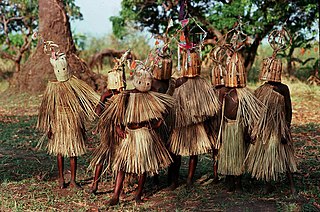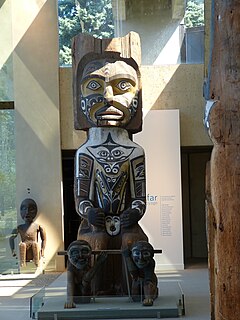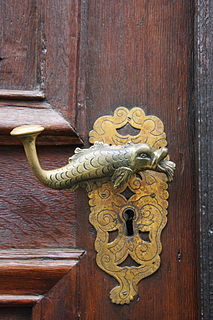 W
WAnthropology of religion is the study of religion in relation to other social institutions, and the comparison of religious beliefs and practices across cultures.
 W
WAnimal worship is rituals involving animals, such as the glorification of animal deities or animal sacrifice. When a god is respected or worshipped by means of a representative animal, an animal cult is formed. Animal cults may be classified according to their outward form or according to their inward meaning, which may of course undergo transformations.
 W
WAnthropological Perspectives on Religion (Anpere), is an open access journal founded in 2006 by Swedish anthropologists Pierre Wiktorin and André Möller. The journal's focus is anthropology of religion.
 W
WApotropaic magic is a type of magic intended to turn away harm or evil influences, as in deflecting misfortune or averting the evil eye. Apotropaic observances may also be practiced out of vague superstition or out of tradition, as in good luck charms, amulets, or gestures such as crossed fingers or knocking on wood. The Greeks made offerings to the "averting gods", chthonic deities and heroes who grant safety and deflect evil.
 W
WAn Apotropaic mark or witch mark is a symbol or pattern scratched into the fabric of a building to keep witches out. It should not be confused with a witches' mark, which is a mark made by a witch.
 W
WThe evolutionary origin of religions and religious behavior is a field of study related to evolutionary psychology, the origin of language and mythology, and cross-cultural comparison of the anthropology of religion. Some subjects of interest include Neolithic religion, evidence for spirituality or cultic behavior in the Upper Paleolithic, and similarities in great ape behavior.
 W
WThe veneration of the dead, including one's ancestors, is based on love and respect for the deceased. In some cultures, it is related to beliefs that the dead have a continued existence, and may possess the ability to influence the fortune of the living. Some groups venerate their direct, familial ancestors. Certain sects and religions, in particular the Eastern Orthodox Church and Roman Catholic Church, venerate saints as intercessors with God; the latter also believes in prayer for departed souls in Purgatory. Other religious groups, however, consider veneration of the dead to be idolatry and a sin.
 W
WA fetish is an object believed to have supernatural powers, or in particular, a human-made object that has power over others. Essentially, fetishism is the attribution of inherent value, or powers, to an object.
 W
WA funerary cult is a body of religious teaching and practice centered on the veneration of the dead, in which the living are thought to be able to confer benefits on the dead in the afterlife or to appease their otherwise wrathful ghosts. Rituals were carried on for the benefit of the dead, either by their relatives or by a class of priests appointed and paid to perform the rites. These rituals took place at the tombs of the dead themselves or at mortuary temples appointed to this purpose. Funerary cults are found in a wide variety of cultures.
 W
WAn invocation may take the form of:
 W
WIn anthropology, liminality is the quality of ambiguity or disorientation that occurs in the middle stage of a rite of passage, when participants no longer hold their pre-ritual status but have not yet begun the transition to the status they will hold when the rite is complete. During a rite's liminal stage, participants "stand at the threshold" between their previous way of structuring their identity, time, or community, and a new way, which completing the rite establishes.
 W
WMalaysian folk religion refers to the animistic and polytheistic beliefs and practices that are still held by many in the Islamic-majority country of Malaysia. Malaysian folk faith is practiced either openly or covertly depending on the type of rituals performed.
 W
WMillenarianism is the belief by a religious, social, or political group or movement in a coming fundamental transformation of society, after which "all things will be changed". These movements have been especially common among people living under colonialism or other forces that disrupted previous social arrangements.
 W
WMyth and ritual are two central components of religious practice. Although myth and ritual are commonly united as parts of religion, the exact relationship between them has been a matter of controversy among scholars. One of the approaches to this problem is "the myth and ritual, or myth-ritualist, theory," held notably by the so-called Cambridge Ritualists, which holds that "myth does not stand by itself but is tied to ritual." This theory is still disputed; many scholars now believe that myth and ritual share common paradigms, but not that one developed from the other.
 W
WPrehistoric religions are the religious beliefs and practices of prehistoric peoples. The term may cover Paleolithic religion, Mesolithic religion, Neolithic religion and Bronze Age religions.
 W
WProto-Indo-European mythology is the body of myths and deities associated with the Proto-Indo-Europeans, the hypothetical speakers of the reconstructed Proto-Indo-European language. Although the mythological motifs are not directly attested – since Proto-Indo-European speakers lived in prehistoric societies – scholars of comparative mythology have reconstructed details from inherited similarities found among Indo-European languages, based on the assumption that parts of the Proto-Indo-Europeans' original belief systems survived in the daughter traditions.
 W
WShamanism is found in many countries around the world, in different regional forms.
 W
WA rite of passage is a ceremony or ritual of the passage which occurs when an individual leaves one group to enter another. It involves a significant change of status in society. In cultural anthropology the term is the Anglicisation of rite de passage, a French term innovated by the ethnographer Arnold van Gennep in his work Les rites de passage, "The Rites of Passage". The term is now fully adopted into anthropology as well as into the literature and popular cultures of many modern languages.
 W
WShamanism is a religious practice that involves a practitioner who is believed to interact with a spirit world through altered states of consciousness, such as trance. The goal of this is usually to direct these spirits or spiritual energies into the physical world, for healing or another purpose.
 W
WThe Spirit Catches You and You Fall Down: A Hmong Child, Her American Doctors, and the Collision of Two Cultures is a 1997 book by Anne Fadiman that chronicles the struggles of a Hmong refugee family from Houaysouy, Sainyabuli Province, Laos, the Lees, and their interactions with the health care system in Merced, California. In 2005 Robert Entenmann, of St. Olaf College wrote that the book is "certainly the most widely read book on the Hmong experience in America."
 W
WTaper burn marks are deep flame shaped scorch marks often found on the timber beams of early modern houses. They were originally thought to have been accidental, but research suggests that most marks may have been made deliberately, as there is clear patterning of the activity. They are theorised to have been made as part of a folk superstition, then thought to protect the building from fire and lightning.
 W
WSociological and anthropological theories about religion generally attempt to explain the origin and function of religion. These theories define what they present as universal characteristics of religious belief and practice.
 W
WTongji or Jitong is a Chinese folk religious practitioner, usually translated as a "spirit medium", "oracle", or "shaman".
 W
WA totem is a spirit being, sacred object, or symbol that serves as an emblem of a group of people, such as a family, clan, lineage, or tribe.
 W
WThe veneration of the dead, including one's ancestors, is based on love and respect for the deceased. In some cultures, it is related to beliefs that the dead have a continued existence, and may possess the ability to influence the fortune of the living. Some groups venerate their direct, familial ancestors. Certain sects and religions, in particular the Eastern Orthodox Church and Roman Catholic Church, venerate saints as intercessors with God; the latter also believes in prayer for departed souls in Purgatory. Other religious groups, however, consider veneration of the dead to be idolatry and a sin.
 W
WYene are small wooden statues found throughout the Leti Islands, in the southeastern part of the Maluku archipelago in eastern Indonesia. Yene are believed to act as a vessel where the ancestor spirit would reside temporarily before departing to the land of the dead.
 W
WThe word zoomorphism derives from the Greek ζωον (zōon), meaning "animal", and μορφη (morphē), meaning "shape" or "form". In the context of art, zoomorphism could describe art that imagines humans as non-human animals. It can also be defined as art that portrays one species of animal like another species of animal or art that uses animals as a visual motif, sometimes referred to as "animal style." In ancient Egyptian religion, deities were depicted in animal form which is an example of zoomorphism in not only art but in a religious context. It is also similar to the term therianthropy; which is the ability to shape shift into animal form, except that with zoomorphism the animal form is applied to a physical object. It means to attribute animal forms or animal characteristics to other animals, or things other than an animal; similar to but broader than anthropomorphism. Contrary to anthropomorphism, which views animal or non-animal behavior in human terms, zoomorphism is the tendency of viewing human behavior in terms of the behavior of animals. It is also used in literature to portray the act of humans or objects with animalistic behavior or features. The use of zoomorphism served as a decorative element to objects that are typically quite simple in shape and design.